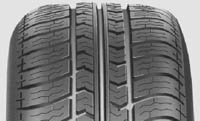|
Компания "Шина-ДВ" - Продажа автошин в Хабаровске на avtoshina-dv.ru! |
 |
 |
|

Entwicklung der Marke Nissan - Erfolge und Schwierigkeiten. Gründung der Allianz Renault-Nissan.
1981 schloss Nissan eine Vereinbarung mit Volkswagen, die die Bedingungen der Zusammenarbeit bei der Produktion und dem Verkauf von Personenkraftwagen in Japan festlegt. Gleichzeitig erweitert das Unternehmen seine Produktion durch die Eröffnung von Industriestandorten - Nissan Motor Manufacturing Corp. in den USA (1980) und Nissan Motor Manufacturing (UK) Limited in Großbritannien (1984). 1982 gewann Nissan zum vierten Mal die Safari-Rallye, was die Welt nur in der unangefochtenen Weltführerschaft dieses Unternehmens bestätigte.
Mitte der 90er Jahre des letzten Jahrhunderts erlebte das Unternehmen die erste globale Krise, die den Verkauf einer Mehrheitsbeteiligung an der französischen Firma Renault erzwang. Eine 40-Milliarden-Dollar-Schuld an die Gläubiger zwang eine globale Reorganisation des Unternehmens, um einen vollständigen finanziellen Zusammenbruch zu vermeiden. Von nun an hielt Renault einen Anteil von 44,4 % an Nissan, während Nissan einen Anteil von 15 % an Renault besaß.
 One can't help but notice how serious Kiishiro was in the little things. It is thanks to him that we all know modern Toyota precisely as "Toyota". The letter "D" was replaced with a "T" because it takes eight risks to write the character "Toyota", and the number eight is considered lucky in Japanese culture.
The next stage in the history of the brand: entering the global market
Today, the emergence of Chinese auto companies on the world stage is in many ways reminiscent of Toyota's expansion into the American market. In the 50s of the twentieth century, Eiji Toyoda took the helm, who managed to introduce the most productive methods of managing and motivating ordinary workers. This method has borne some fruit. In 1951, the production of the first off-road vehicle, the Toyota BJ Jeep, began. In 1957, the solid Crown entered the American market. In addition, plants were opened in Brazil and Australia.
In 1971, Nissan developed the first Experimental Safety Vehicle (ESV), using more technology than ever to improve its safety.
The two energy crises of the 1970s set off a boom in exports of small Japanese cars known for their excellent fuel economy and superior quality. In fuel economy tests conducted by the US Environmental Protection Agency in 1973, the Sunny won, thereby finding huge popularity in the US during the "Datsun saves" advertising campaign.
One can't help but notice how serious Kiishiro was in the little things. It is thanks to him that we all know modern Toyota precisely as "Toyota". The letter "D" was replaced with a "T" because it takes eight risks to write the character "Toyota", and the number eight is considered lucky in Japanese culture.
The next stage in the history of the brand: entering the global market
Today, the emergence of Chinese auto companies on the world stage is in many ways reminiscent of Toyota's expansion into the American market. In the 50s of the twentieth century, Eiji Toyoda took the helm, who managed to introduce the most productive methods of managing and motivating ordinary workers. This method has borne some fruit. In 1951, the production of the first off-road vehicle, the Toyota BJ Jeep, began. In 1957, the solid Crown entered the American market. In addition, plants were opened in Brazil and Australia.
In 1971, Nissan developed the first Experimental Safety Vehicle (ESV), using more technology than ever to improve its safety.
The two energy crises of the 1970s set off a boom in exports of small Japanese cars known for their excellent fuel economy and superior quality. In fuel economy tests conducted by the US Environmental Protection Agency in 1973, the Sunny won, thereby finding huge popularity in the US during the "Datsun saves" advertising campaign.
|
|